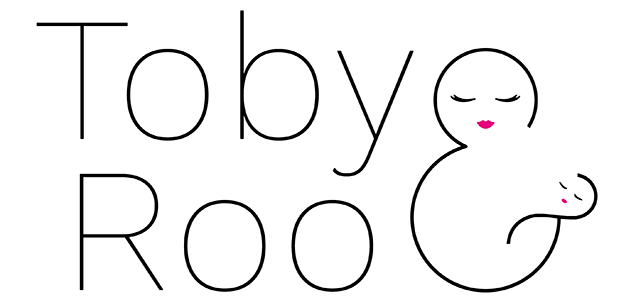You’ve probably stared in the mirror, wondering how to undo years of sun exposure, stubborn acne scars, or fine lines that seem to appear overnight. Skin damage accumulates quietly—a mix of environmental stress, aging, and the type of lifestyle—but its effects scream for attention. While creams and serums might offer temporary fixes, they often leave you stuck in a frustrating loop of minimal results. But here’s the good news: laser treatments can erase years of skin damage, and science backs it up.
In this article, we’ll break down how these treatments reverse the damage, highlight the most effective options, and help you determine if they’re right for your skin.
Types of skin damage lasers can address
Sun damage, acne scars, and natural aging can leave your skin dull and uneven. You might’ve tried serums or creams for temporary relief, but let’s face it—those fixes rarely last. Luckily, laser procedures step in where topicals fall short, offering a more transformative, long-term solution. Lucia Clinic specializes in state-of-the-art laser treatments designed to restore skin’s radiance by reducing pigmentation, smoothing texture, and stimulating collagen production. The result? Brighter, smoother, and younger-looking skin that holds up over time.
Not all lasers work the same way, though. Some, like non-ablative lasers, gently heat deeper layers toboost collagen without damaging the surface. Others, such as ablative lasers, remove thin layers of skin to address deeper scars or wrinkles. Nonetheless, the right laser targets exactly what you want to fix.
Still skeptical that laser treatments can erase years of skin damage? The data speaks for itself. Namely, a 2022 study published in the Journal Of Clinical Medicine reports that96.5% of patients achieved over 95% clearance of hyperpigmentation after an average of 4.3 sessions with a picosecond 755-nm Alexandrite laser. Pair that with modern advancements in laser technology, and it’s no wonder dermatologists increasingly turn to these procedures for stubborn, long-term damage.
How laser treatments can erase years of skin damage
Laser treatments use concentrated beams of light energy, similar to laser hair removal, but they only use it to repair skin damage at the source.
That said, lasers work by:
- Targeting pigment — They emit specific wavelengths of light absorbed by pigments like melanin (in dark spots) or hemoglobin (in broken blood vessels). This energy breaks apart pigment clusters or shrinks blood vessels to reduce visible discoloration and/or redness.
- Stimulating collagen — The heat from the laser also activates fibroblasts, the cells that produce collagen—a protein vital for firm, plump skin. Over weeks, new collagen fibers form to smooth fine lines and improve texture.
- Resurfacing skin — Ablative lasers remove the outer layer of damaged skin to reveal healthier tissue underneath. Non-ablative lasers bypass the surface entirely, heating deeper layers to trigger healing
Popular types of laser treatments
Laser technology has evolved to address nearly every skin concern. But with so many options, getting lost in the details is easy.
Here’s a breakdown of the most common types and what they do best.
1. CO2 lasers (Ablative)
- Best for: Deep wrinkles, stubborn scars (acne, surgical), sun damage.
- How they work: Remove layers of damaged skin with precision, triggering aggressive collagen regeneration.
- Downtime: 2+ weeks of redness and peeling.
2. Erbium YAG lasers (Ablative or non-ablative)
- Best for: Moderate wrinkles, shallow scars, uneven texture.
- How they work: Gentler than CO2, with options for surface resurfacing or deeper collagen stimulation.
- Downtime: 1–2 weeks (ablative) vs. 3–5 days (non-ablative).
3. Pulsed-dye lasers
- Best for: Redness, rosacea, broken capillaries.
- How they work: Target blood vessels with heat, causing them to collapse and fade.
- Downtime: Minimal (redness fades in 24–48 hours).
4. Nd: YAG lasers
- Best for melasma and hyperpigmentation (especially in darker skin tones).
- How they work: Penetrate deeper to break up pigment without harming the surface.
- Downtime: None to mild redness.
5. Fractional lasers
- Best for: Acne scars, mild to moderate wrinkles, texture issues.
- How they work: Create microscopic “zones” of treated skin, leaving the surrounding tissue intact for faster healing.
- Downtime: 3–7 days of redness (varies by intensity).
6. Picosecond lasers
- Best for: Stubborn pigmentation (tattoos, age spots), fine lines.
- How they work: Deliver ultra-short light pulses to shatter pigment particles more effectively.
- Downtime: None to slight redness.
How to choose the right laser treatment for you
Laser treatments can erase years of skin damage. But with so many laser options available, finding the perfect match for your skin can be tough.
That said, here’s how you can choose the right type of treatment.
Define your primary goal
Are you battling dark spots, smoothing scars, or fighting wrinkles? Lasers excel at specialized tasks. For example:
- Pigmentation issues (sunspots, melasma) pair well with picosecond or Nd: YAG lasers, which break up pigment without harming surrounding tissue.
- Deep acne scars or pronounced wrinkles often require the power of ablative CO2 lasers to resurface layers of damage.
- Redness or rosacea responds best to pulsed-dye lasers, which collapse visible blood vessels gently and effectively.
2. Consider your downtime budget
Your recovery time dictates options.
If you can’t afford to take weeks off, opt for non-ablative fractional lasers or Nd: YAG treatments that work beneath the surface. You might experience slight redness for 1–2 days.
On the other hand, fractional ablative lasers provide a balance, targeting deeper damage with manageable peeling that lasts between 3 and 5 days.
In the meantime, CO2 lasers require 2+ weeks of healing but deliver dramatic improvements for severe sun damage or scarring.
3. Factor in your skin’s sensitivity
Not all lasers play nice with every skin tone or type. That said, darker skin tones are prone to hyperpigmentation with aggressive lasers. That’s why Nd: YAG or picosecond lasers are a good option here; they minimize this risk while still tackling discoloration.
Meanwhile, sensitive or rosacea-prone skin benefits from cooler, gentler lasers like pulsed dye, which reduces inflammation. Lastly, thick, oily skin may tolerate ablative treatments better than thin, delicate skin, which could favor non-ablative approaches.
4. Consult a professional
A board-certified dermatologist will assess your skin’s texture, tone, and damage depth. They’ll recommend a laser that balances safety, efficacy, and your personal preferences for time off work.
Final takeaway
Laser treatments can erase years of skin damage by tackling imperfections at their root: breaking up pigment clusters, resurfacing uneven texture, and stimulating collagen for lasting firmness. The process isn’t instant—it relies on your skin’s natural renewal cycle—but with the right laser chosen for your concerns and skin type, results compound over weeks to reveal visibly smoother, brighter skin.




